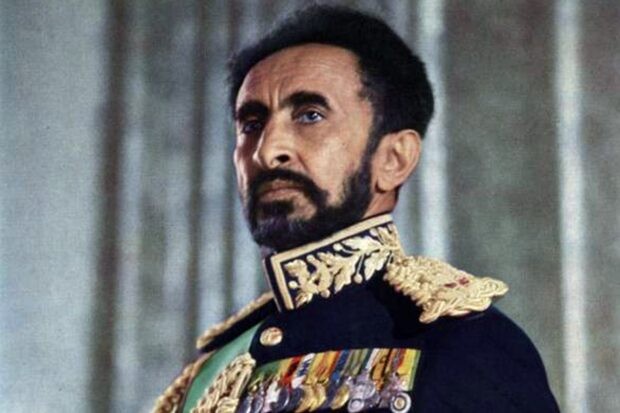The Deposition of Emperor Haile Selassie and the Rise of the Derg Regime
On September 12, 1974, Emperor Haile Selassie was overthrown by the Derg, a Soviet-backed military junta formally known as the Coordinating Committee of the Armed Forces, Police, and Territorial Army. This coup ended the Ethiopian monarchy, paving the way for the Derg to rule Ethiopia until May 28, 1991.
The Build-Up to Revolution: 1960 Coup Attempt and Student Movements
The coup attempt of December 1960 marked the beginning of serious cracks in Haile Selassie’s regime. While the attempt, led by Germame Neway and Mengistu Neway, failed to overthrow the emperor, it set the tone for subsequent resistance movements. The coup unfolded while Haile Selassie was on a state visit to Brazil, with the plotters hoping to seize power in his absence. Despite its failure, the coup’s ideological motivation—demanding land reform and opposition to imperial autocracy—would resonate in the years to come.
The failed coup also inspired growing dissent among the Ethiopian intelligentsia. In February 1965, Addis Ababa University students famously chanted “Land for the Tiller” as they marched through the streets, calling for radical land reform. These protests were fueled by the realization that large portions of Ethiopia’s rural population were still living under oppressive feudal systems.
This student activism grew stronger into the late 1960s and early 1970s, with their voices becoming symbolic of the broader unrest in Ethiopian society. Haile Selassie’s inability to address these grievances, combined with the government’s inability to respond to the devastating famine of 1973, which killed over 100,000 people in Wollo and Tigray, sealed his fate.
Mounting Pressure and the Final Blow: The 1974 Ethiopian Coup
By 1974, Ethiopia was simmering with discontent. Strikes and protests erupted across the country as military units began mutinying over inadequate pay. The Derg, initially formed in June 1974 as a Coordinating Council, rapidly consolidated power and targeted Haile Selassie’s ministers, including Prime Minister Endelkachew Makonnen.
On September 12, 1974, the emperor was formally deposed, and the monarchy soon dismantled. The royal family, including Crown Prince Asfaw Wossen, fled to exile in London. However, the fall of the emperor was far from peaceful. In November of that year, the Derg ordered the execution of 60 high-ranking officials, including two former prime ministers, in what became known as the “Massacre of the Sixty.” This dramatic and violent event was broadcast over national radio, signaling a brutal shift in power.
General Aman Andom, a key leader during the coup, became one of the notable figures executed by the Derg, alongside Haile Selassie’s grandson, Admiral Iskinder Desta. Reflecting on the events, Aman Andom reportedly said before his death, “Our nation is at a crossroads, and I fear that the future will be written in blood.”
The Abolition of the Monarchy and Nationalization
Following the deposition of Haile Selassie, the Derg quickly moved to dismantle the semi-feudal system. On March 21, 1975, the Derg formally abolished the Ethiopian Empire and all imperial titles. The committee also began a Marxist-Leninist reorganization of the country, with sweeping land nationalization programs and the redistribution of property.
Ethiopian students, who had been pushing for radical land reforms, initially celebrated the fall of the monarchy. However, the Derg’s increasingly authoritarian rule would soon stifle the very reforms the revolutionaries had hoped for.
The Death of Haile Selassie
On August 27, 1975, Emperor Haile Selassie died in captivity under mysterious circumstances. While official reports from the Derg claimed his death was due to complications from a prostate operation, subsequent investigations revealed that he may have been strangled in his bed by military officers. Haile Selassie’s personal physician, Asrat Woldeyes, later remarked, “The truth of his death is shrouded in darkness, but one thing is certain: the emperor’s life was taken unjustly.”
It wasn’t until 1994—three years after the fall of the Derg regime—that the truth about Haile Selassie’s assassination was publicly confirmed. His remains were finally laid to rest in a grand ceremony on November 5, 2000, at Holy Trinity Cathedral in Addis Ababa, amid continued controversy and debate over his legacy.
Legacy of the Derg and the Ethiopian Monarchy
The Derg’s reign, marked by the implementation of a Marxist-Leninist state and brutal repression, left a lasting impact on Ethiopia. By the late 1980s, the country was mired in civil war and famine, culminating in the fall of the Derg in 1991.
The overthrow of Haile Selassie marked the end of over a thousand years of imperial rule in Ethiopia. Despite the controversies surrounding his leadership, including accusations of autocratic land seizures and the mishandling of the 1973 famine, Haile Selassie is still remembered by many Ethiopians as a symbol of unity and modernization. His iconic status as a pan-African leader and as a revered figure in Rastafarianism continues to shape his legacy across the world.

